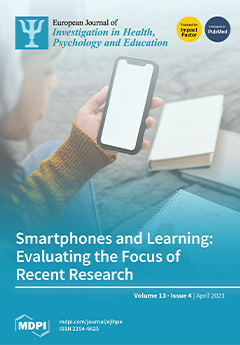The present study investigated how challenge-based learning (CBL) in physical education (PE) may affect students’ basic psychological needs (BPNs), motivational regulations, engagement, and learning in comparison with a traditional teaching (TT) methodology. A quasiexperimental study with experimental and control groups was carried out.
[...] Read more.
The present study investigated how challenge-based learning (CBL) in physical education (PE) may affect students’ basic psychological needs (BPNs), motivational regulations, engagement, and learning in comparison with a traditional teaching (TT) methodology. A quasiexperimental study with experimental and control groups was carried out. In total, 50 participants (16 boys and 34 girls) between 13 and 15 years old (M
age = 13.35, SD = 0.62) were involved in the experience for 6 weeks (n
control = 24; n
experimental = 26). Validated questionnaires were administered both before and after the intervention in both groups. Furthermore, theoretical knowledge and badminton-specific motor skill tests were carried out in both groups after the intervention. An analysis showed that after the intervention, students in the CBL condition improved their autonomy (M
before = 3.15 vs. M
after = 3.39; ES = 0.26 *), competence (M
before = 4.01 vs. M
after = 4.18; ES = 0.33 *), and relatedness satisfaction (M
before = 3.86 vs. M
after = 4.06; ES = 0.32 *). As for behavioural engagement measures, students in the CBL condition exhibited higher scores after than those from before (M
before = 4.12 vs. M
after = 4.36; ES = 0.35 *). No significant changes were observed for motivational regulations or agentic engagement. On learning outcomes, students in the experimental group achieved higher scores in both theoretical knowledge (M
contol = 6.48 vs. M
experimental = 6.79) and badminton-specific motor skills (M
contol = 6.85 vs. M
experimental = 7.65) than the control group did. The present study findings highlight that CBL might be a valid and effective methodological approach for students in PE to achieve adaptive motivational, behavioural, and learning outcomes.
Full article






